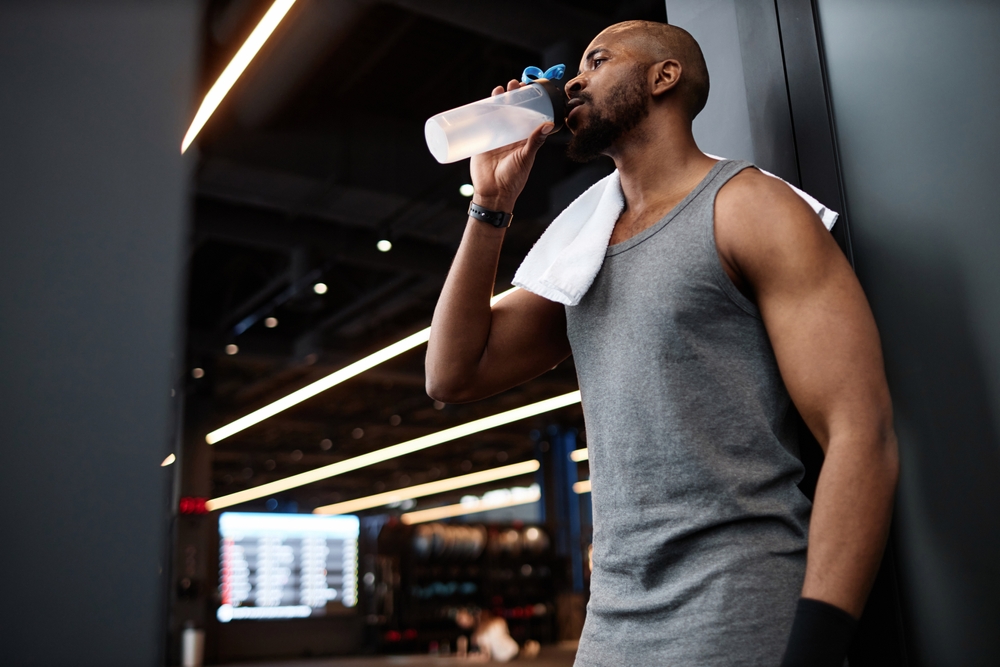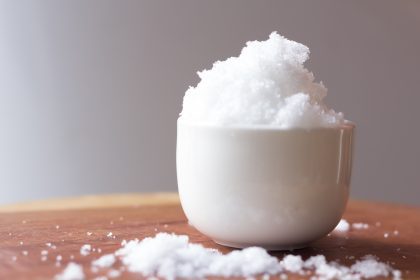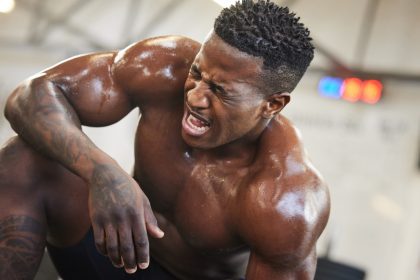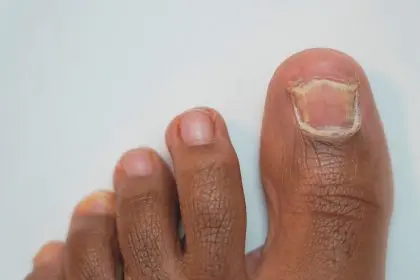Hydration has long been recognized as foundational to human health, with its importance emphasized by fitness trainers, dermatologists, and medical professionals alike. Recently, a more sophisticated understanding of how water interacts with both skin cells and muscle tissue has emerged, revealing striking parallels between optimal hydration for external appearance and internal recovery. This convergence has given rise to advanced hydration strategies that simultaneously support skin elasticity and muscle function—a dual-benefit approach gaining traction among athletes, fitness enthusiasts, and skincare devotees.
The science connecting skin and muscle hydration
At first glance, skin and muscles appear to have distinct functions and needs. However, at the cellular level, they share remarkable similarities in how they utilize and respond to hydration. Both tissues rely on precisely balanced fluid environments to function optimally, with water serving as the medium for nutrient transport, waste removal, and biochemical reactions.
The extracellular matrix—the structural framework surrounding cells—plays a crucial role in both skin and muscle tissue. In skin, this matrix contains collagen and elastin fibers suspended in a hydrated gel-like substance rich in hyaluronic acid, which can hold up to 1,000 times its weight in water. Similarly, muscle tissue contains an extracellular matrix that supports muscle fibers and facilitates the exchange of nutrients and waste products.
Dehydration affects both tissues through similar mechanisms. When fluid levels drop, the extracellular matrix becomes less pliable, reducing the skin’s elasticity and the muscle’s ability to contract and relax efficiently. Cellular waste removal slows, and the inflammatory response intensifies in both tissues, leading to accelerated aging in skin and delayed recovery in muscles.
This molecular-level connection explains why dehydration simultaneously manifests as dull, less elastic skin and compromised muscle performance and recovery. It also explains why advanced hydration approaches can benefit both systems simultaneously through targeted strategies that go beyond simply drinking more water.
7 advanced hydration approaches for dual benefits
- Structured timing protocols
The timing of fluid consumption significantly impacts both skin hydration and muscle recovery. New research indicates that specific hydration windows exist when the body can more efficiently utilize water for cellular repair and regeneration.
Pre-sleep hydration has emerged as particularly beneficial for both skin and muscles. During deep sleep, the body accelerates cellular repair, with blood flow to skin increasing by 10-15% and muscle protein synthesis peaking. Consuming 8-12 ounces of water about 90 minutes before bedtime provides necessary fluids for these processes without causing sleep disruption from bladder filling.
Similarly, the first 30 minutes after waking represents another critical hydration window when the body efficiently absorbs and distributes water. Consuming 16-24 ounces of water during this period helps rehydrate tissues after overnight fluid losses and primes both skin and muscles for optimal function throughout the day.
Following exercise, a specific hydration protocol involves consuming roughly 24 ounces of fluid for every pound lost during activity, spaced over 2-3 hours rather than all at once. This approach maximizes cellular uptake of water in both skin and muscle tissue, enhancing recovery while preventing the fluid from simply passing through the digestive system.
- Hypertonic-hypotonic cycling
A pioneering approach to hydration involves strategically alternating between hypertonic solutions (containing more dissolved particles than blood) and hypotonic solutions (containing fewer dissolved particles) throughout the day.
Hypertonic solutions containing minerals, trace elements, and small amounts of glucose create a gradient that pulls fluid into the bloodstream more rapidly. Following this with hypotonic fluid (such as filtered water) when cells are receptive allows for enhanced cellular hydration in both skin and muscle tissues.
This cycling approach mimics the body’s natural shifting between states of higher and lower osmolality throughout the day. Starting with a hypertonic solution upon waking helps rapidly rehydrate the body after overnight fluid losses, while hypotonic hydration during the day maintains cellular fluid levels. Returning to hypertonic solutions after exercise accelerates the replacement of both water and electrolytes lost during activity.
Research indicates this approach leads to more stable hydration of both skin and muscle cells throughout the day, with improvements in skin elasticity measurements and markers of muscle recovery compared to consistent intake of water alone.
- Temperature-responsive hydration
The temperature of consumed fluids significantly affects how they interact with both skin and muscle tissue. Research has revealed specific temperature ranges that optimize different aspects of hydration and recovery.
Cool water (50-60°F/10-15°C) accelerates gastric emptying by up to 30%, allowing for more rapid fluid delivery to tissues, while reducing core temperature during or after intense activity. This temperature range has proven particularly effective for post-exercise rehydration when the goal is rapid fluid replacement and cooling.
In contrast, warm water (135-145°F/57-62°C) enhances circulation to both skin and muscles through mild vasodilation, potentially increasing nutrient delivery and waste removal. Warm hydration appears particularly beneficial for morning routines and recovery from low-intensity activities or when consumed 60-90 minutes before sleep.
The strategic alternation between cool and warm fluids throughout the day has shown superior results for both skin hydration levels and muscle recovery markers compared to maintaining a single temperature. This approach adapts hydration to the body’s changing needs throughout the day, with cool fluids supporting intense activity and warm fluids enhancing recovery periods.
- Electrolyte optimization beyond sodium
While sodium has long been recognized as crucial for hydration, recent research has revealed the importance of precise ratios of multiple electrolytes for optimal cellular hydration in both skin and muscle tissue.
Potassium, often overlooked in traditional hydration approaches, plays a critical role in cellular fluid balance and electrical signaling in muscle cells. The optimal sodium-to-potassium ratio for enhanced cellular hydration appears to be approximately 3:2, reflecting the concentration found in human blood plasma.
Magnesium has emerged as another key electrolyte for dual-benefit hydration, as it regulates water balance in skin cells while facilitating muscle relaxation and recovery. Approximately 100-150mg of magnesium per liter of hydration fluid has shown beneficial effects on both skin elasticity and muscle relaxation metrics.
Trace minerals including zinc, selenium, and calcium in specific proportions further enhance cellular hydration by supporting the function of aquaporins—specialized protein channels that regulate water movement into and out of cells in both skin and muscle tissue.
This comprehensive electrolyte approach ensures fluid not only reaches cells but effectively enters them, delivering deeper hydration to both skin layers and muscle fibers compared to water or basic electrolyte solutions.
- Bioactive-enhanced hydration
The addition of specific bioactive compounds to hydration solutions can dramatically enhance their effectiveness for both skin and muscle tissue through shared cellular mechanisms.
L-histidine, an amino acid, functions as a natural osmoprotectant, helping cells maintain water balance during osmotic stress. When included in hydration solutions at concentrations of 200-400mg per liter, L-histidine helps protect both skin and muscle cells from dehydration while enhancing their ability to maintain optimal fluid levels.
Low-molecular-weight hyaluronic acid added to hydration solutions can be absorbed into the bloodstream and distributed to both skin and joint tissues, where it enhances water retention in the extracellular matrix. This improves skin hydration and elasticity while supporting the fluid environment around muscles and tendons.
Certain plant-derived bioactives like betaine (from beets) and ectoine (found in extremophile bacteria) act as compatible solutes that help cells maintain water balance without disrupting cellular functions. These compounds protect against environmental stressors in skin while enhancing muscle cells’ ability to maintain hydration during physical stress.
The strategic combination of these bioactives in hydration solutions represents a significant advancement beyond traditional electrolyte drinks, with research demonstrating measurable improvements in both dermal water content and markers of muscle recovery.
- Chronohydration for circadian alignment
The emerging field of chronohydration recognizes that the body’s hydration needs follow natural circadian rhythms, with different requirements throughout the 24-hour cycle. Aligning hydration strategies with these rhythms can enhance benefits for both skin and muscles.
Morning hydration (6-9 am) ideally includes slightly higher mineral content to restore electrolyte balance after overnight losses. This supports the natural morning cortisol peak that prepares muscles for activity while providing necessary hydration as skin prepares for environmental exposure.
Midday hydration (11 am-2 pm) functions optimally with moderate electrolyte levels and slightly cooler temperatures, supporting peak alertness and metabolic activity in both skin and muscle cells.
Evening hydration (6-8 pm) benefits from the addition of magnesium and glycine, which support the parasympathetic shift toward recovery and repair in both tissues. These nutrients enhance the natural evening increase in skin barrier recovery functions while supporting muscle relaxation and repair.
This time-matched approach recognizes that both skin and muscle tissues follow circadian patterns of activity and recovery, with specific hydration needs during different phases of this cycle. Research indicates chronohydration leads to more efficient cellular water utilization compared to evenly spaced fluid intake throughout the day.
- Collagenated microcluster technology
Perhaps the most innovative hydration advancement involves structuring water molecules into smaller, more bioavailable clusters through specific processing techniques and the addition of hydrolyzed collagen peptides.
Conventional water contains molecule clusters of 10-15 H₂O molecules, which can struggle to efficiently penetrate cellular membranes. New technology has developed processing methods that create stabilized “microclustered” water with 5-6 molecules per cluster, enhancing cellular penetration by up to 30%.
When combined with specific collagen peptides (typically 2-5g per liter), these smaller water clusters demonstrate enhanced ability to transport the peptides into both the dermal matrix of skin and the fascial network surrounding muscles. The collagen peptides themselves support structural integrity in both tissues, while the enhanced water delivery provides deeper cellular hydration.
Research indicates this approach leads to more sustained skin hydration with measurable improvements in elasticity and barrier function, while simultaneously enhancing markers of muscle recovery and reducing post-exercise soreness compared to conventional hydration approaches.
Implementation and personalization strategies
While these advanced hydration approaches offer significant benefits, implementing them effectively requires adaptation to individual needs, activity levels, and environmental conditions.
A foundational assessment should include bioimpedance analysis to evaluate baseline hydration status, water loss rates during typical activities, and cellular hydration patterns. This provides crucial data for personalizing volume, timing, and composition of hydration protocols.
Environmental conditions significantly impact optimal approaches, with higher humidity reducing evaporative losses from skin while potentially increasing sweating during exercise. Temperature extremes require adjustments to both hydration volume and composition, with cold environments often leading to underestimated fluid needs due to reduced thirst sensation.
Age represents another critical factor, as both skin and muscle tissues experience changes in water content and management with advancing years. Individuals over 50 typically benefit from more structured hydration protocols with higher electrolyte content and additional bioactives to support declining natural hydration mechanisms in both tissues.
Activity type also demands customization, with endurance activities creating different hydration demands than high-intensity interval training or strength work. The optimal approach varies based on duration, intensity, and the specific muscles being targeted, with each activity pattern creating unique fluid and electrolyte needs.
Measuring dual-benefit success
Evaluating the effectiveness of advanced hydration strategies requires monitoring both skin and muscle recovery markers, ideally using objective measurements rather than subjective perceptions alone.
For skin assessment, corneometry provides quantifiable measurements of stratum corneum hydration levels, while elastometry evaluates skin elasticity and rebound capacity. Standardized photography under controlled lighting can track visible improvements in skin texture and tone over time.
Muscle recovery markers include rate of strength restoration after fatigue, change in inflammatory markers like creatine kinase, and recovery of full range of motion. Heart rate variability provides insights into autonomic nervous system recovery, which reflects overall tissue recovery status.
Regular assessments using these objective measures allow for refined personalization of hydration protocols over time, optimizing the approach based on individual response patterns rather than generalized recommendations.
Beyond drinking: complementary modalities
While internal hydration forms the foundation of this dual-benefit approach, complementary strategies can enhance overall effectiveness for both skin and muscle tissues.
Topical applications with osmotic ingredients like glycerin, hyaluronic acid, and ceramides can temporarily enhance skin hydration while the internal approach builds deeper, more sustainable effects. Ingredients that support the skin’s natural moisturizing factor provide particular benefit when coordinated with internal hydration protocols.
External hydrotherapy, including contrast showering (alternating cool and warm water) and partial immersion techniques, can enhance circulation to both skin and muscles, improving the delivery of internally consumed fluids to these tissues.
Humidity management in living and working environments affects the transepidermal water loss from skin and the hydration maintenance requirements of the body. Maintaining ambient humidity between 40-60% typically supports optimal skin hydration while also benefiting respiratory tissue hydration.
The future of integrated hydration science
The convergence of dermatological and sports performance research continues to advance our understanding of optimal hydration approaches that simultaneously benefit skin appearance and muscle function. Emerging areas of development include:
Genetic hydration profiling, which examines genetic markers related to aquaporin function, electrolyte processing, and fluid balance regulation to create truly personalized hydration protocols based on inherited traits rather than just response monitoring.
Nanotechnology-enhanced delivery systems that can target specific tissues with complementary hydration compounds, potentially allowing for even more efficient delivery of water and supportive nutrients to both skin and muscle cells.
Real-time monitoring technologies, including minimally invasive sensors that track tissue hydration levels throughout the day, allowing for dynamic adjustments to hydration protocols based on immediate needs rather than predetermined schedules.
As research continues to uncover the molecular mechanisms connecting hydration to tissue function, these integrated approaches will likely become increasingly sophisticated, offering even greater benefits for both aesthetic appearance and physical performance through optimized fluid management.
The recognition that optimal hydration represents more than simply drinking adequate water—that timing, composition, temperature, and complementary strategies all play crucial roles—marks a significant advancement in both skincare and sports recovery science. By understanding and implementing these advanced approaches, individuals can simultaneously support skin vitality and muscle function through strategically optimized hydration.















